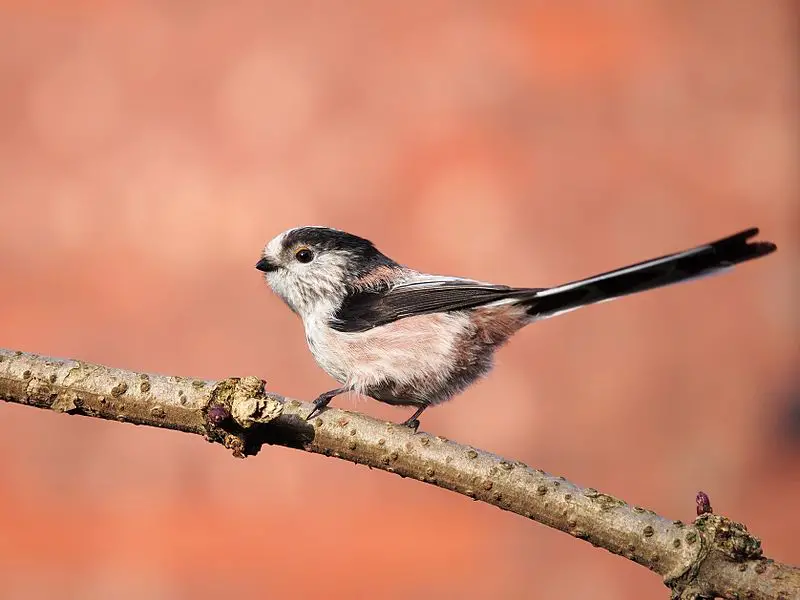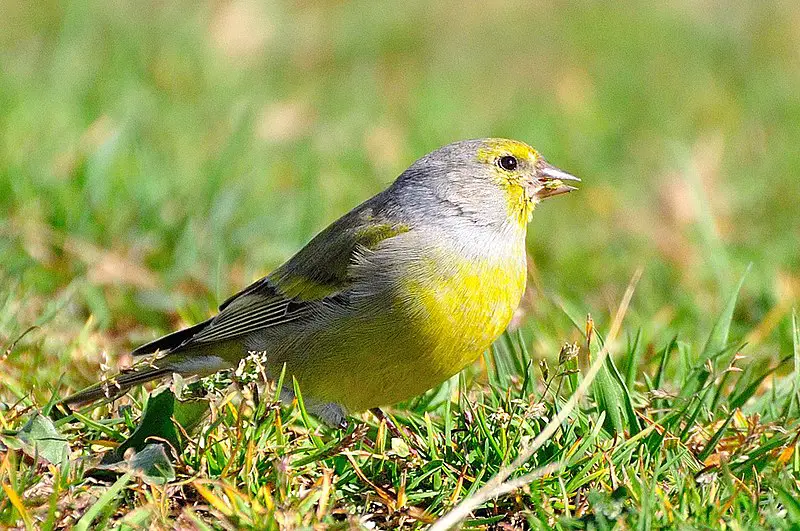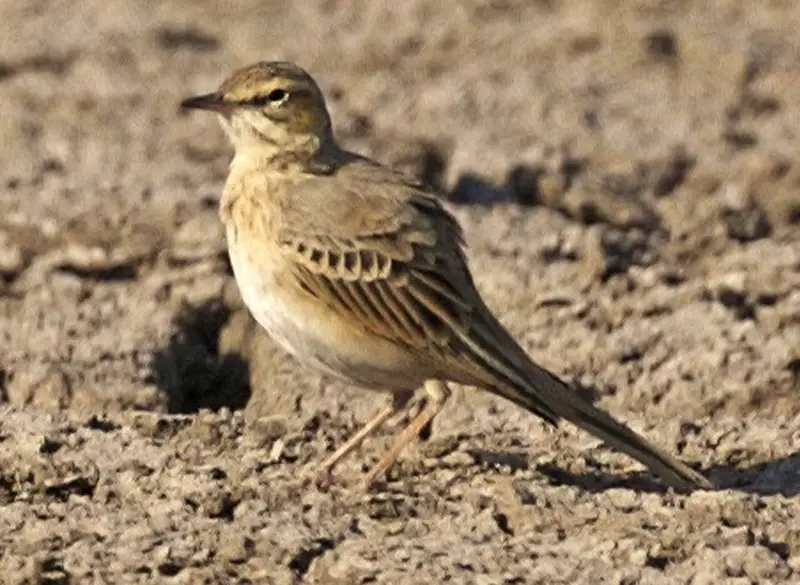Andorra is a small principality nestled between Spain and France in the Pyrenees mountains. It is known for its lush landscape and its diverse bird population.
With over 180 species of birds recorded in the country, Andorra is a paradise for bird watchers and nature lovers. From the majestic Golden Eagle to the diminutive Firecrest, Andorra offers a unique opportunity to observe a wide variety of species in their natural habitats.
In this article, we will take a closer look at the birds of Andorra and explore the different species to be found in this beautiful region.
1. Eurasian Reed Warbler

The Eurasian reed warbler (Acrocephalus scirpaceus) is a species of Old World Warbler native to the temperate parts of Europe and Asia.
It breeds in wetlands such as marshes, ponds and rivers with dense vegetation like reeds or tall grasses.
During its wintering season, it migrates southward to sub-Saharan Africa where there are milder conditions.
This small bird has streaked brown plumage on the upperparts and white underparts which makes it difficult for predators to spot among the foliage.
Its diet consists mainly of insects including aphids, caterpillars larvae and moths caught while flying over water or by gleaning from plants growing near water bodies.
The male sings an attractive song consisting of several phrases repeated one after another as part of their courtship display during breeding season in order attract females for mating purposes.Scientific classification:
| Kingdom | Animalia |
| Phylum | Chordata |
| Class | Aves |
| Order | Passeriformes |
| Family | Acrocephalidae |
| Genus | Acrocephalus |
| Species | A. scirpaceus |
2. Sittidae
Sittidae is a family of passerine birds also known as nuthatches. These small, terrestrial songbirds typically have short tails and stout bills.
They are found in North America, Europe, Asia, Africa and Madagascar.
The majority of species occur in Eurasia but there are four representatives from the Americas that make up this group – the red-breasted nuthatch (Sitta canadensis), pygmy nuthatch (Sitta pygmaea), white-breasted nuthatch (Sitta carolinensis) and brown-headed nuthatch (Sitta pusilla).
Their diet consists mainly of insects such as caterpillars, spiders and beetles along with some nuts or seeds depending on the species’ particular habitat preferences.
Nuts comprise an important part of their winter food supply when insects become scarce due to colder temperatures outside nesting season months.
Sittidae birds use their strong feet to climb trees while searching for these items; they then wedge open bark crevices with their beaks so they can reach prey stored beneath them.
3. Motacillidae

Motacillidae is a family of small passerine birds consisting of around 70 species. They are found across Europe, Africa, Asia and even Alaska with two migratory breeding species.
The three genera they belong to include wagtails which typically have medium to long tails; longclaws that can only be spotted in the Afrotropics; and pipits which possess the most cosmopolitan distribution worldwide.
These birds feed on insects as well as seeds for their diets and are usually seen in open habitats such grasslands or wetlands where food sources like invertebrates can easily be accessed.
Most Motacillidae species also use mud nests during breeding season making them easy targets for predators so it’s important we protect these beautiful creatures.Scientific classification:
| Kingdom | Animalia |
| Phylum | Chordata |
| Class | Aves |
| Order | Passeriformes |
| Superfamily | Passeroidea |
| Family | Motacillidae Horsfield, 1821 |
4. Treecreepers

Treecreepers are small passerine birds found in wooded areas of the Northern Hemisphere and sub-Saharan Africa.
They have dull colored plumage, long curved bills, stiff tails and strong feet that help them to climb up tree trunks while searching for food such as insects and spiders.
The two genera Certhia and Salpornis include eleven species which can be identified by their distinct call – a high pitched ‘tsee-tsit’.
Treecreepers build cup shaped nests on trees usually near the base or middle trunk using mosses, lichens, grasses with leaves inside them to provide insulation from cold temperatures.
These birds also use bark crevices during winter months when they shelter in groups together against extreme weather conditions.Scientific classification:
| Kingdom | Animalia |
| Phylum | Chordata |
| Class | Aves |
| Order | Passeriformes |
| Superfamily | Certhioidea |
| Family | Certhiidae Leach, 1820 |
5. Old World Orioles

Old World orioles are a family of passerine birds found in the Old World. It comprises four genera: piopios, figbirds, pitohuis and the original genus Oriolus.
The African black-headed species have sometimes been removed from this latter group due to their distinct characteristics as well as other proposed splits for Oriolus.
These colorful birds can be identified by their bright yellow or orange plumage that often features darker markings on wings and head areas, although some species may also display a blue hue or stripes across the body feathers.
They typically feed on insects such as caterpillars and grasshoppers but will supplement with small fruits when available too – making them beneficial additions to gardens.Scientific classification:
| Kingdom | Animalia |
| Phylum | Chordata |
| Class | Aves |
| Order | Passeriformes |
| Superfamily | Orioloidea |
| Family | Oriolidae Vigors, 1825 |
6. Sylviid Warblers

The Sylviid warblers are a family of passerine birds found in Eurasia and Africa. They include the typical warblers as well as babblers that were formerly part of the Old World babbler family.
These birds have slender bodies, pointed wings, long tails and strong legs adapted for ground-dwelling habits like running or hopping along branches.
The male often has bright colors while females are usually duller in coloration with more muted plumage patterns than males.
Some species also show sexual dimorphism where one sex may be larger or smaller than its counterpart; for instance some species may have longer tail feathers on the female side compared to their male counterparts.
Many members of this group feed on insects but some specialize on seeds, fruits, nectar or even frogs.Scientific classification:
| Kingdom | Animalia |
| Phylum | Chordata |
| Class | Aves |
| Order | Passeriformes |
| Superfamily | Sylvioidea |
| Family | Sylviidae Leach, 1820 |
7. Bee-Eater

Bee-eaters are one of the most beautiful and vibrant birds in existence. They have a slender body, long wings, down turned bills and their signature elongated central tail feathers which make them instantly recognizable from afar.
Their plumage is incredibly colorful with many shades ranging from blues to greens to reds that glisten when they fly through the air.
These stunning creatures can be found all over Africa, Asia, Southern Europe, Australia and New Guinea where they feed mainly on bees but also other insects like flies or wasps as well as small mammals such as lizards or rodents.
Bee-eaters live in colonies near rivers or wetlands so that they may easily hunt for food while staying close together for safety purposes.
Additionally it allows them to better display their impressive courtship dances during mating season.Scientific classification:
| Kingdom | Animalia |
| Phylum | Chordata |
| Class | Aves |
| Order | Coraciiformes |
| Family | Meropidae Rafinesque, 1815 |
8. Tichodroma

Tichodroma is the only known genus of bird in the family Tichodromidae. The most famous member of this genus is the wallcreeper (Tichodroma muraria).
Initially, Linnaeus placed it with treecreepers in the Certhiidae family but more recently a study suggests that its closest relatives are nuthatches from Sittidae.
These birds have short wings and a long tail which helps them to climb vertical surfaces like walls and trees.
They typically feed on insects found under bark or trapped within crevices as well as spiders and small reptiles at times.
Moreover they tend to migrate south during winter months while their range expands considerably during summertime when they can be seen far away from their breeding grounds across Europe and Asia up until Siberia.Scientific classification:
| Kingdom | Animalia |
| Phylum | Chordata |
| Class | Aves |
| Order | Passeriformes |
| Family | Tichodromidae Swainson, 1827 |
| Genus | Tichodroma Illiger, 1811 |
Also Featured In: Bulgarian Birds, Birds Commonly Found in Slovenia
9. Pallid Swift

The Pallid Swift is a small bird that looks similar to the barn swallow or house martin, but it belongs to an entirely different order of birds.
This similarity in appearance is due to convergent evolution, which reflects their shared lifestyles.
These swifts have very short legs used only for clinging onto vertical surfaces such as walls and trees.
They are mostly found flying over open countryside during migration season and they feed on insects while in flight.
The feathers of this species range from greyish-brown above with white patches along its wings and tail, while beneath the body usually appears pale yellowish-white.
While these birds can be quite noisy when around roosting sites, they tend to remain silent when migrating through areas where humans live.Scientific classification:
| Kingdom | Animalia |
| Phylum | Chordata |
| Class | Aves |
| Order | Apodiformes |
| Family | Apodidae |
| Genus | Apus |
| Species | A. pallidus |
10. Long-Tailed Tits

Long-tailed tits are a small passerine bird family with long tails compared to their size. They have 13 species in 3 genera, and they mostly live in Eurasia.
These birds love to stay active by foraging for insects among shrubs and trees throughout the day.
During non-breeding season, these birds can be found living together in large flocks of up to 50 individuals.
These playful little creatures make wonderful companions due to their social nature and cheerful personalities.
Their bright plumage also adds a beautiful splash of colour wherever they go.Scientific classification:
| Kingdom | Animalia |
| Phylum | Chordata |
| Class | Aves |
| Order | Passeriformes |
| Superfamily | Sylvioidea |
| Family | Aegithalidae Reichenbach, 1850 |
11. Citril Finch

The Citril Finch is a small songbird belonging to the true finch family, Fringillidae. It is native to southwestern Europe from Spain to the Alps and has long been considered closely related to the European Goldfinch.
This bird breeds in high mountain areas and feeds on grass seeds, buds and insects. Its bright yellow head contrasts with its brown body making it easily distinguishable among other birds of similar size.
In addition, this species’ loud cheery calls often echo through mountainous terrain as they flock together during breeding season or when foraging for food sources.
The Citril Finch can be spotted throughout much of Europe year-round but especially in springtime when their presence offers an invigorating soundscape that refreshes any nature enthusiast’s soul.Scientific classification:
| Kingdom | Animalia |
| Phylum | Chordata |
| Class | Aves |
| Order | Passeriformes |
| Family | Fringillidae |
| Subfamily | Carduelinae |
| Genus | Carduelis |
| Species | C. citrinella |
12. Ring Ouzel

The Ring Ouzel is a medium-sized thrush that stands between 23 and 24 centimetres tall. It has a predominantly black plumage, with males featuring a white crescent across their chest.
Females are browner in colour and young birds may lack the pale markings altogether. This species can be found mainly throughout Europe but also inhabits parts of Asia Minor and North Africa during the winter months.
Its diet consists primarily of insects, berries, fruits, earthworms and snails which it finds while foraging on woodland floors or in rocky areas around streams or rivers.
The ring ouzel nests near its food sources – typically amongst boulders along mountain streams – where they lay three to five eggs at once per nest every springtime season before heading south again come autumn time.Scientific classification:
| Kingdom | Animalia |
| Phylum | Chordata |
| Class | Aves |
| Order | Passeriformes |
| Family | Turdidae |
| Genus | Turdus |
| Species | T. torquatus |
Also Featured In: Common Slovakian Birds, Moorland Birds You Need to Know
13. Western Subalpine Warbler

The Western Subalpine Warbler is a small, typical warbler that can be found in Europe and North-Western Africa.
It has distinct male and female plumages; the adult males have grey backs and heads with brick-red underparts as well as white malar streaks (“moustaches”).
The females are mainly brown above with a greyer head than their counterparts, while possessing whitish lower parts. Both genders of this species build nests on the ground or low bushes near water sources such as streams or rivers.
They enjoy an insectivorous diet which consists of larvae, beetles, spiders and other arthropods they find along branches or foliage.
This bird also forms flocks during migration periods to make navigation easier when travelling long distances at night time in search for better climates suitable for breeding purposes.Scientific classification:
| Kingdom | Animalia |
| Phylum | Chordata |
| Class | Aves |
| Order | Passeriformes |
| Family | Sylviidae |
| Genus | Curruca |
| Species | C. iberiae |
14. Tawny Pipit

The Tawny Pipit is a medium-large passerine bird that breeds across much of the central Palearctic region.
It has an impressive range, stretching from northwest Africa and Portugal to Central Siberia and Inner Mongolia.
During winter months it migrates southwards to tropical Africa and India where it spends its time in grasslands.
Its scientific name ‘Anthus campestris’ comes from Latin; Anthus meaning ‘smallbird’, while Campestris means “of open country or fields”.
The Tawny Pipit displays bold streaks on its back with sandy brown upper parts which blend into white underparts.
It can be identified by its distinctive song too – consisting of several rising notes followed by one lower trill note at the end.Scientific classification:
| Kingdom | Animalia |
| Phylum | Chordata |
| Class | Aves |
| Order | Passeriformes |
| Family | Motacillidae |
| Genus | Anthus |
| Species | A. campestris |
Also Featured In: Birds You’ll Find in Albania, Common Birds of Mumbai
15. Western Orphean Warbler

The Western Orphean Warbler is a beautiful bird species of the Curruca genus, found mainly in Mediterranean regions during summer and Sub-Saharan Africa during winter.
It can also be seen as a rare vagrant to Northern and North West Europe.
Its name comes from the mythical musician and singer Orpheus due to its melodious whistles which it sings throughout the day.
This small warbler has striking grey feathers with black streaks along its back, yellowish under parts with white wing bars.
They are usually found in open woodland areas or on bushy hillsides where they feed mostly on insects, spiders, worms and berries.
The western orphean warbler is an interesting species that captivates us with its beauty whilst reminding us of one of history’s greatest legends -Orpheus.Scientific classification:
| Kingdom | Animalia |
| Phylum | Chordata |
| Class | Aves |
| Order | Passeriformes |
| Family | Sylviidae |
| Genus | Curruca |
| Species | C. hortensis |
16. Western Black-Eared Wheatear

The Western black-eared wheatear is a small migratory passerine bird with an Old World flycatcher family.
The breeding males have a distinctive forehead and crown of white, contrasting sharply against their jet-black facial mask and ear patch.
They also feature grayish brown upperparts, pale underparts, light wings with two bold white bars across them, reddish tail feathers and pink legs.
These birds breed in open habitats like steppes or semi-deserts from Portugal to Central Asia during the summer months before taking off on long distance migration routes that take them all the way south to Sub Saharan Africa for wintering grounds.
Their diet mainly consists of insects which they catch by flying up into air after perching on low vegetation or rocks near their prey’s location.Scientific classification:
| Kingdom | Animalia |
| Phylum | Chordata |
| Class | Aves |
| Order | Passeriformes |
| Family | Muscicapidae |
| Genus | Oenanthe |
| Species | O. hispanica |